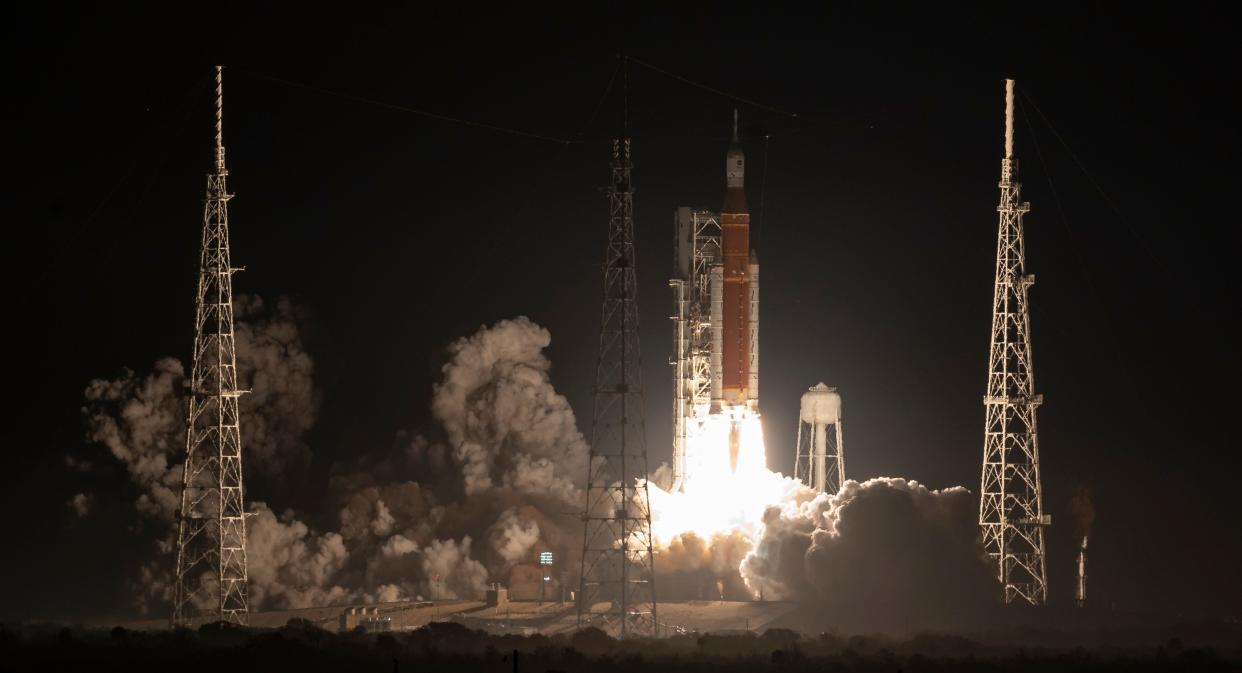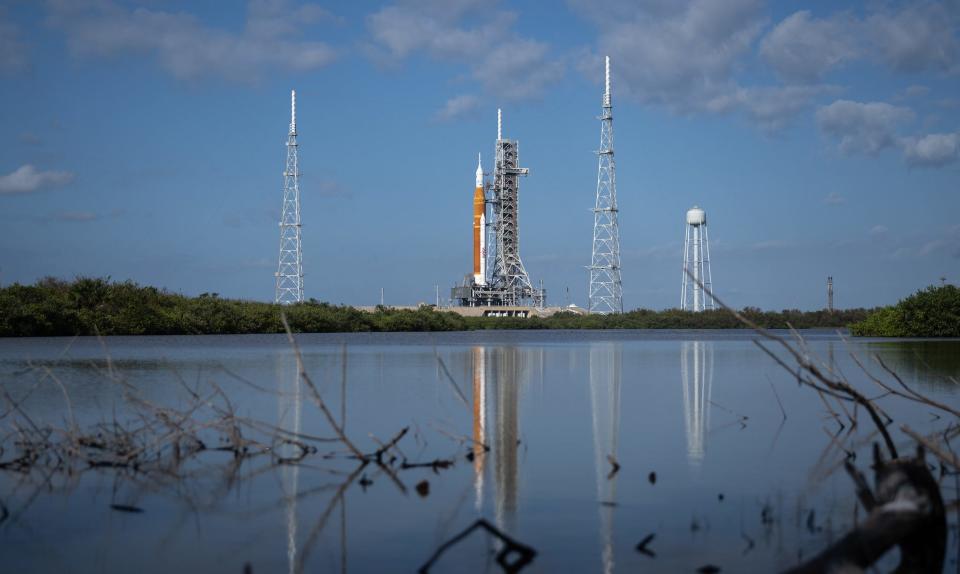Michigan State researchers send experiment on NASA mission

EAST LANSING − NASA launched a spacecraft this past week that will travel beyond the moon and back … and a piece of Michigan State University is aboard.
The U.S. space agency launched its Artemis I unmanned mission Wednesday, Nov. 16, carrying experiments researchers hope will answer questions that could allow astronauts to endure longer space voyages in the future. Among the experiments is one from MSU that will look at how food can be grown in space.
MSU’s is one of four experiments picked by NASA’s Space Biology Program, according to a press release. The program hopes to gain a better understanding of how terrestrial biology is affected by traveling in deep space.
Other research efforts onboard include a University of Colorado-Boulder yeast experiment, in addition to a fungus experiment led by the Naval Research Laboratory and a photosynthetic algae experiment from the nonprofit research corporation Institute for Medical Research.
This is the third time the MSU lab led by Federica Brandizzi, an MSU Foundation professor in the College of Natural Science and the MSU-DOE Plant Research Laboratory, has sent an experiment aboard a NASA mission. Her team’s earlier experiments sought to understand the unique stresses present in space and how plants respond to them.
“How fantastic it is to have the possibility to work with NASA,” Brandizzi said. “NASA is a really wonderful agency that pushes the frontier of knowledge. I’m so grateful that they gave me and Michigan State the possibility to explore new frontiers and push the boundaries on new knowledge.”
When plants go to space, or seeds in this experiment, they experience many variables they would never experience on earth, she said, including a loss of gravity and elevated radiation levels.
“We are hoping that we are going to learn how plants sustain space life,” Brandizzi said. “Space flight comes with enormous stress for any organism that is not evolved to live in space.”
Plants becoming weightless without Earth’s gravitational pull are among the variables, according to the press release. And plants will see higher doses of cosmic rays without the shielding atmosphere that the Earth provides.

NASA launched the mission from the Kennedy Space Center in Florida after months of delays, including technical issues and Hurricane Ian, which hit Florida in September.
The Artemis I is the first in a series of missions that will increase in complexity toward building a long-term human presence at the moon, according to NASA information.
The spacecraft is expected to travel 1.3 million miles over just more than 25 days, including passing about 40,000 miles beyond the moon, before splashing down back to Earth on Dec. 11, according to a NASA press release.
Scientists know, because of prior experiments, that plants growing in space produce lower levels of amino acids which keep seedlings on Earth strong, according to a press release. Those same amino acids have nutritional value for people who eat plants.
Some of the seeds Brandizzi and her lab sent are enriched with amino acids, others are normal seeds, according to the press release. Through the experiment, they hope to learn if fortifying the seeds on Earth with the amino acids might lead to a more sustainable way to grow healthy plants and, eventually food, in space.
Brandizzi’s team sent thale cress seeds on the mission. They are a popular plant model species in science, according to the press release and, though the plant isn’t grown as a form of food, researchers say what they learn can translate to plants that are grown as food.
Researchers expect radiation and other factors to impact the amino acids present in the seeds, Brandizzi said. Ultimately, the results of the research conducted by Brandizzi and her team could help determine which plants are best to send to space.
Brandizzi’s team previously grew plants on the International Space Station, finding that plants do not grow as well there as they do on Earth, she said.
Contact Mark Johnson at majohnson2@lsj.com. Follow him on Twitter at @ByMarkJohnson.
This article originally appeared on Lansing State Journal: Michigan State sends seed experiment to space aboard NASA mission

